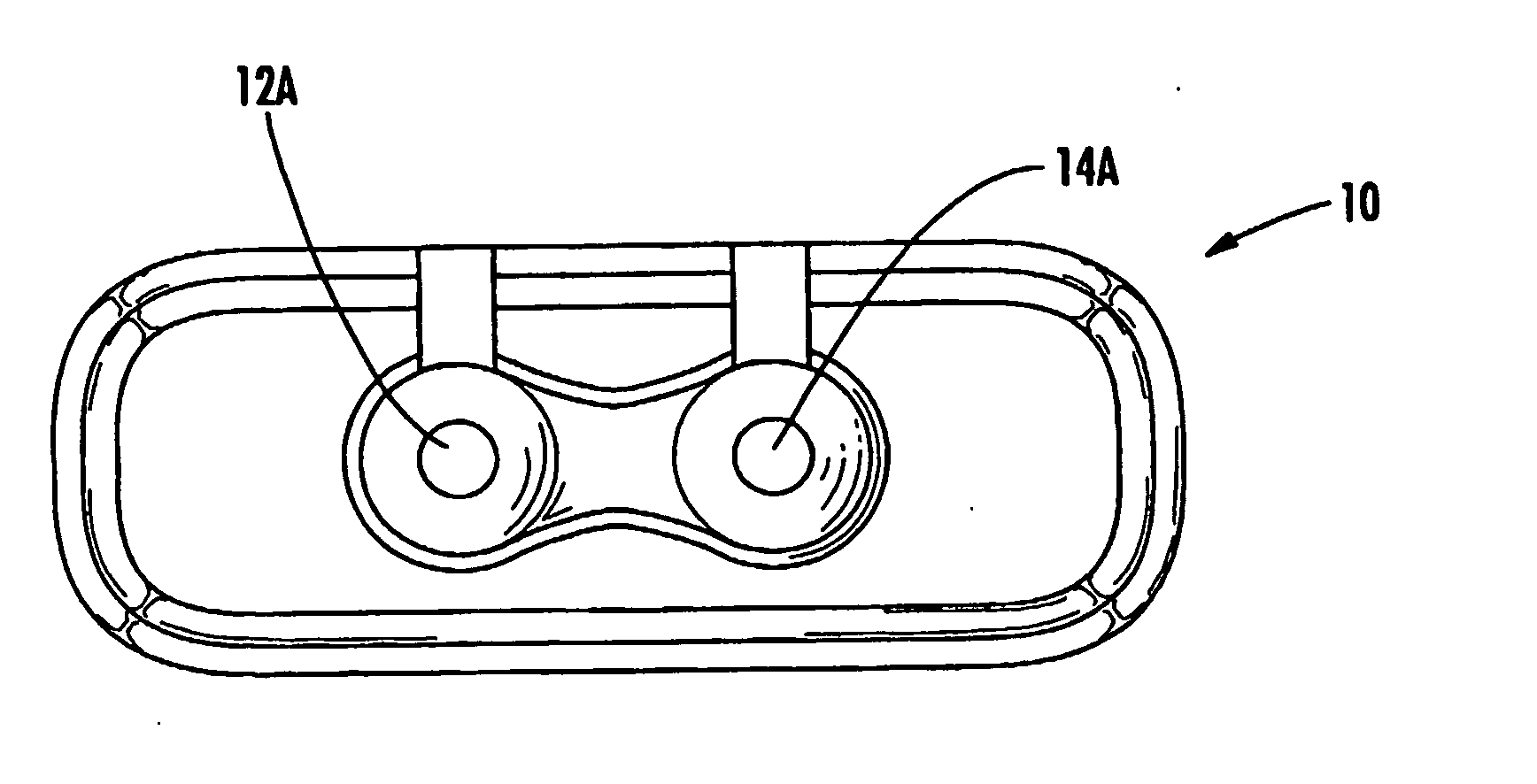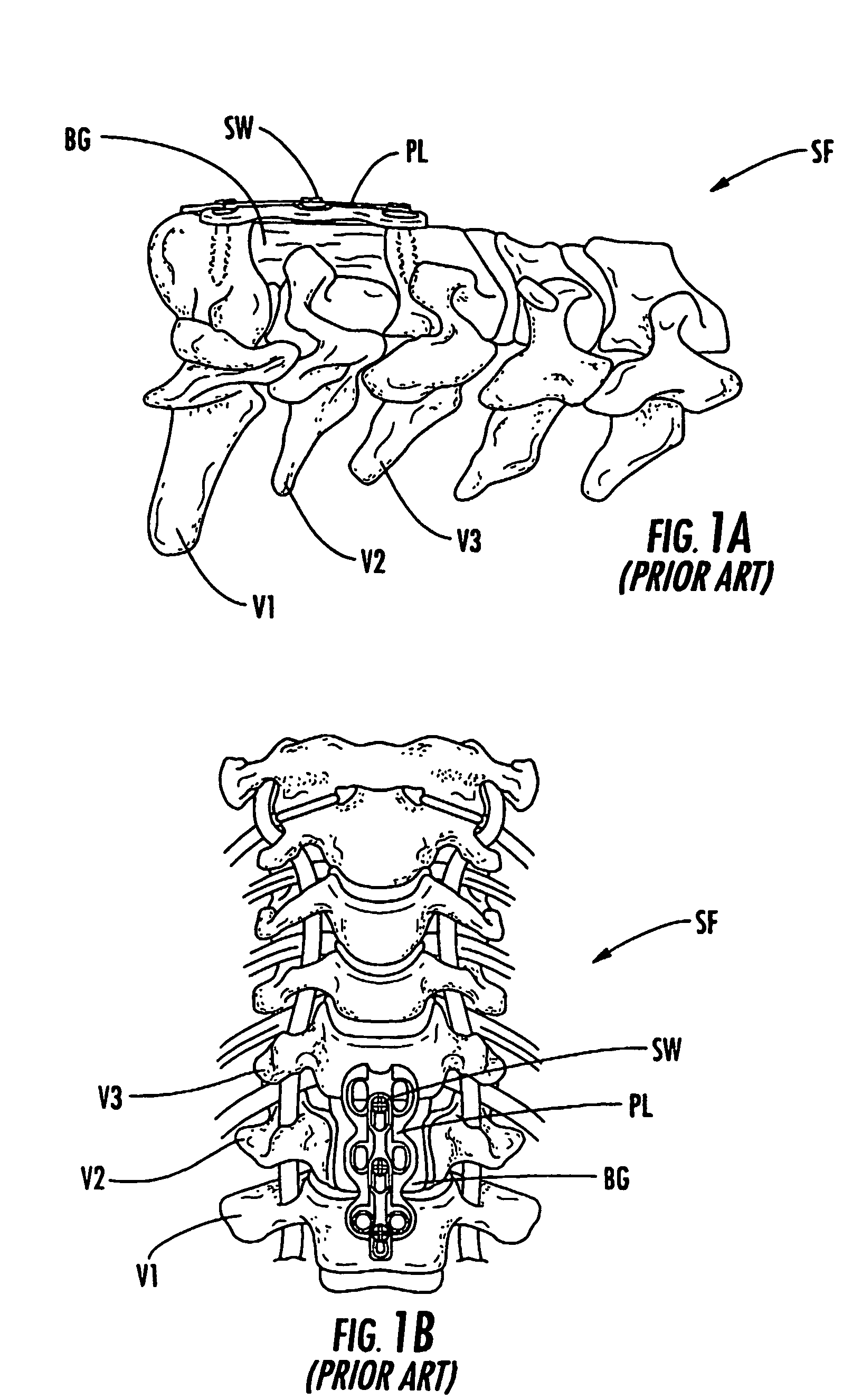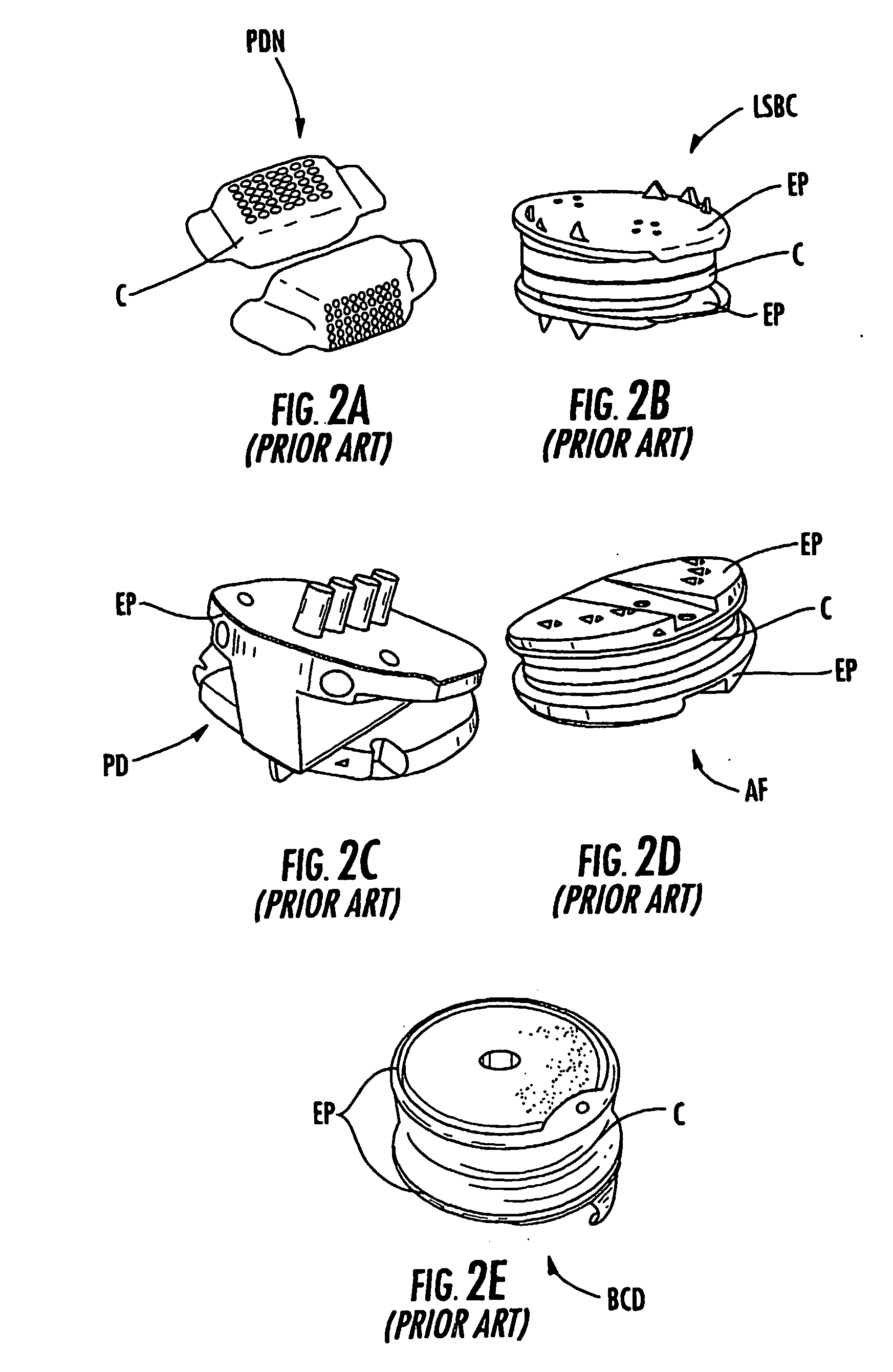Spine replacement system for the treatment of spine instability and degenerative disc disease
a spine and disc disease technology, applied in the field of prosthetic systems, can solve the problems of discs being more susceptible to degeneration (or flattening), pain to occur, and discs being more susceptible to degeneration, so as to avoid the movement or migration of prosthetics
- Summary
- Abstract
- Description
- Claims
- Application Information
AI Technical Summary
Benefits of technology
Problems solved by technology
Method used
Image
Examples
Embodiment Construction
[0040] The subject matter disclosed herein relates to apparatuses and methods for recreating the anterior and middle columns of the subaxial spine complete with adjacent motion segments. These apparatuses may be used to replace both a single damaged disc and portions of the adjacent vertebrae as well as entire segments of the spine for the repair of spinal discs or vertebrae damaged by injury or disease. It can be appreciated that while the subject matter disclosed herein refers to a human spinal column, the subject matter disclosed herein may also be applicable to any vertebral animal.
Definitions
[0041] The following definitions are used throughout this description. The terms “anterior” and “posterior” mean toward the front or toward the back of the body, respectively. For example, a discussion of the anterior portion of the vertebral body refers to the portion of the vertebra that is toward the front of the body. The terms “superior” and “inferior” mean upper and lower, respectiv...
PUM
| Property | Measurement | Unit |
|---|---|---|
| Elastomeric | aaaaa | aaaaa |
| Circumference | aaaaa | aaaaa |
| Resilience | aaaaa | aaaaa |
Abstract
Description
Claims
Application Information
 Login to View More
Login to View More - R&D
- Intellectual Property
- Life Sciences
- Materials
- Tech Scout
- Unparalleled Data Quality
- Higher Quality Content
- 60% Fewer Hallucinations
Browse by: Latest US Patents, China's latest patents, Technical Efficacy Thesaurus, Application Domain, Technology Topic, Popular Technical Reports.
© 2025 PatSnap. All rights reserved.Legal|Privacy policy|Modern Slavery Act Transparency Statement|Sitemap|About US| Contact US: help@patsnap.com



